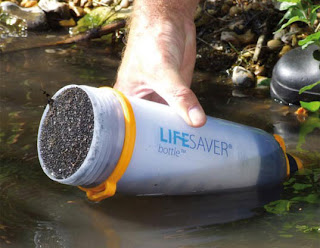A young boy in Cambodia got dangerously sick after drinking unpurified water. After hearing about the boy's story the Christian Broadcasting Network (CBN) came and built a well near his school so all the students can have access to pure, clean water and won't ever become ill from the water again. Believe it or not, contaminated water "kills more kids than AIDS, malaria, war and accidents put together." Sending supplies for people in 3rd world countries to access filtered water is crucial to improving the lives of these individuals. Kids want to be gaining a good education in school not worrying about whether or not they are going to be sick after drinking the water in their town. By improving the access to purified water, individuals in third world countries will become more productive and gain a stronger education.
Purifying Water in 3rd World Countries
Increasing the access to purified water in Third world countries is a major need. Without clean drinking water, people are susceptible to contracting deadly diseases. 3.4 million people die each year from contracting a water related disease. People have been working on creating devices that people in countries with a dirty water supply can use to filter out bacteria and other contaminates. You might be thinking can't they use a Bobble bottle? The answer is no because the carbon filters in a Bobble bottle or Brita bottle are to filter tap water. The carbon filter filters out chlorine and organic contaminates. The water that needs to be filtered in Third world countries is loaded with deadly bacteria and other contaminates. Below are a few water filtration inventions created to improve the water in third world countries.
The LifeStraw is a small, portable, convenient device that allows one to drink water directly from a river. The straw has a filter that removes bacteria and other contaminates in the water. 884 people in the world currently use the LifeStraw to access clean water.
Life Sack is another fantastic water purification product that has brought clean water to hundreds of people in Africa. This sack filters water through a solar water treatment using UV-A radiation.
 |
| Life Straw |
 |
| Cycloclean |
Water Purifying Bicycle or Cycloclean created in Japan to filter water after natural disasters. This machine generates filtered water (up to 3000 liters a day) by pedaling on the bicycle. This is meant to produce clean water without the use of electricity or gas.
 |
| Life Sack |
Life Sack is another fantastic water purification product that has brought clean water to hundreds of people in Africa. This sack filters water through a solar water treatment using UV-A radiation.
And lastly, Lifesaver a bottle that filters out contaminates in the water. This bottle is able to completely filter through dirty water and make it drinkable. However, it is an expensive item. The manufacturing company is currently working toward getting donations and people to help distribute these bottles to those who are in desperate need for fresh, drinkable water.
What Can We Do To Help?
What Can We Do To Help?
Distributing these water filtration sources to people in Third world countries saves the lives of millions of individuals and prevents waterborne diseases and illnesses. Improving the water increases the productivity in these countries as well as the lives of each person. 345 million people in Africa alone don't have access to clean water, yet $100 billion dollars is being spent toward manufacturing water bottles all over the world. If people switch to filtered-reusable bottles, the money saved in reduced water bottle production can be used toward sending LifeStraws or Live Saver Bottles to people who are living in areas that lack access to clean water. These are lives that can be saved and improved with something as little as a filtered straw. How many more must die from waterborne illness?









